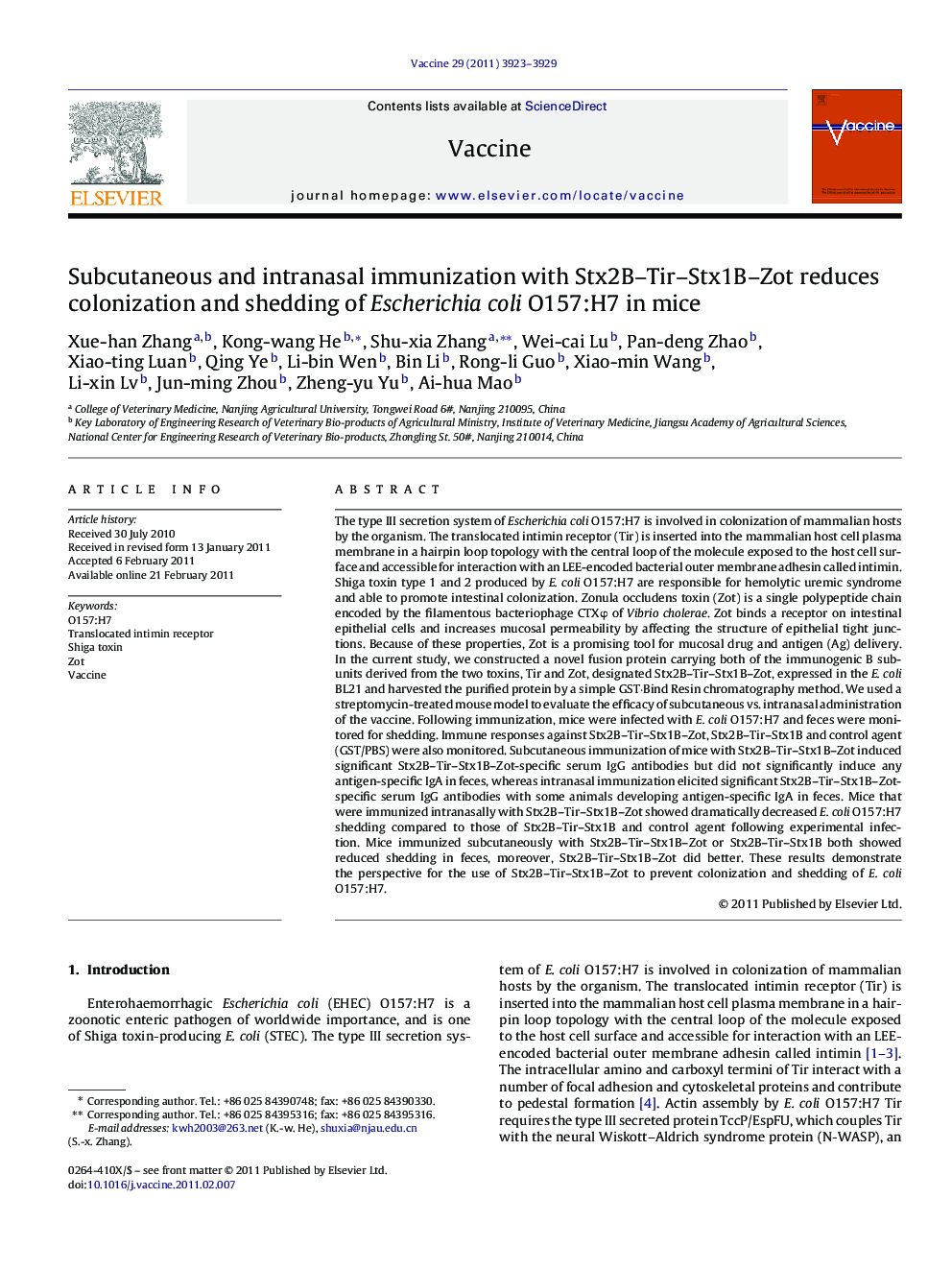| کد مقاله | کد نشریه | سال انتشار | مقاله انگلیسی | نسخه تمام متن |
|---|---|---|---|---|
| 2403747 | 1102930 | 2011 | 7 صفحه PDF | دانلود رایگان |

The type III secretion system of Escherichia coli O157:H7 is involved in colonization of mammalian hosts by the organism. The translocated intimin receptor (Tir) is inserted into the mammalian host cell plasma membrane in a hairpin loop topology with the central loop of the molecule exposed to the host cell surface and accessible for interaction with an LEE-encoded bacterial outer membrane adhesin called intimin. Shiga toxin type 1 and 2 produced by E. coli O157:H7 are responsible for hemolytic uremic syndrome and able to promote intestinal colonization. Zonula occludens toxin (Zot) is a single polypeptide chain encoded by the filamentous bacteriophage CTXφ of Vibrio cholerae. Zot binds a receptor on intestinal epithelial cells and increases mucosal permeability by affecting the structure of epithelial tight junctions. Because of these properties, Zot is a promising tool for mucosal drug and antigen (Ag) delivery. In the current study, we constructed a novel fusion protein carrying both of the immunogenic B subunits derived from the two toxins, Tir and Zot, designated Stx2B–Tir–Stx1B–Zot, expressed in the E. coli BL21 and harvested the purified protein by a simple GST·Bind Resin chromatography method. We used a streptomycin-treated mouse model to evaluate the efficacy of subcutaneous vs. intranasal administration of the vaccine. Following immunization, mice were infected with E. coli O157:H7 and feces were monitored for shedding. Immune responses against Stx2B–Tir–Stx1B–Zot, Stx2B–Tir–Stx1B and control agent (GST/PBS) were also monitored. Subcutaneous immunization of mice with Stx2B–Tir–Stx1B–Zot induced significant Stx2B–Tir–Stx1B–Zot-specific serum IgG antibodies but did not significantly induce any antigen-specific IgA in feces, whereas intranasal immunization elicited significant Stx2B–Tir–Stx1B–Zot-specific serum IgG antibodies with some animals developing antigen-specific IgA in feces. Mice that were immunized intranasally with Stx2B–Tir–Stx1B–Zot showed dramatically decreased E. coli O157:H7 shedding compared to those of Stx2B–Tir–Stx1B and control agent following experimental infection. Mice immunized subcutaneously with Stx2B–Tir–Stx1B–Zot or Stx2B–Tir–Stx1B both showed reduced shedding in feces, moreover, Stx2B–Tir–Stx1B–Zot did better. These results demonstrate the perspective for the use of Stx2B–Tir–Stx1B–Zot to prevent colonization and shedding of E. coli O157:H7.
Journal: Vaccine - Volume 29, Issue 22, 17 May 2011, Pages 3923–3929